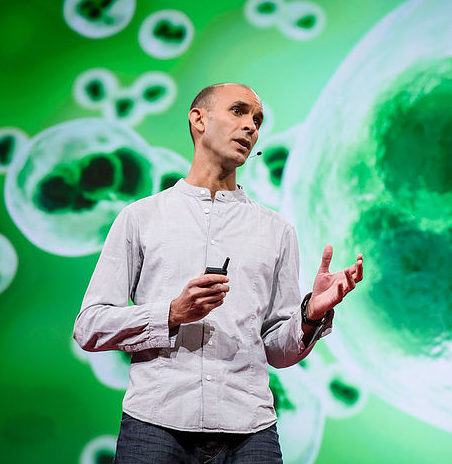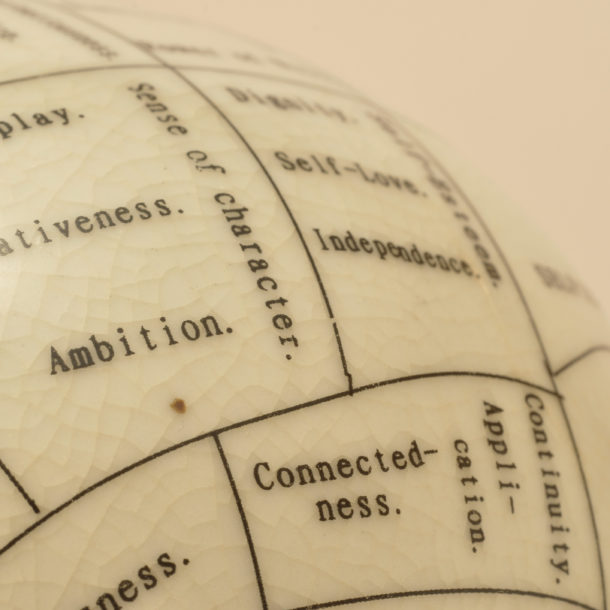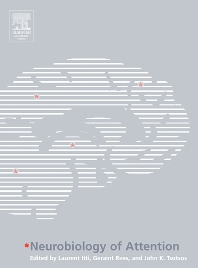Does your brain construct your conscious reality? Part II
In a word, no. Your brain doesn't "think"; YOU think, using your brain
“It looks like scientists and philosophers might have made consciousness far more mysterious than it needs to be” Anil Seth, The real problem, Aeon, 2016
In a previous post, I discussed Anil Seth’s recent TED Talk about neuroscience and the mind, Does your brain construct your conscious reality? ,a compendium of fallacies about the mind and the brain.
Seth asks: “How does consciousness happen?”. He answers: “…somehow, within each of our brains, the combined activity of many billions of neurons—each one a tiny biological machine—is generating our conscious experience…”
There are three fallacies in this one sentence. In my earlier post, I pointed out the fallacy of Seth’s assumption that rational thought is a material power of the brain, which it is not. In this post, I’ll discuss Seth’s mereological fallacy, a fundamental fallacy which is endemic in neuroscience.
The mereological fallacy is the confusion of the part for the whole. It is the nonsensical attribution of abilities to the part that can only be abilities of the whole. It is the mereological fallacy to say that my mouth speaks. Actually, I speak, using my mouth. It is the mereological fallacy to say that my feet walk. Actually, I walk, using my feet.
This fallacy is employed incessantly in neuroscience. Neuroscientists commonly claim that the brain or a part of the brain understands, or imagines, or sees, or wills. For example, we are told, variously, that “the amygdala simultaneously comforts and aggravates” (Psychology Today, 2018); elsewhere, it “attaches emotional significance to events and memories” while the “hippocampus, meanwhile, reminds us which courses of action are congruent with our mood” (The Conversation) and the “ prefrontal cortex calms the amygdala, helping us regulate our emotions” (GoodTherapy, 2015). A large crowd, it would seem, and each has a different agenda…

Traditional phrenology mapped mental states onto the skull; today many neuroscientists map them onto brain organs.
But of course, the brain and its parts do none of those things. The brain understands nothing, imagines nothing, sees nothing (it’s dark in the skull and the brain has no eyes anyway!). It wills nothing. We understand, we imagine, we see, and we will, using our brains.
Brains are parts of persons—organs actually, and they certainly do “organ” things. Brains have blood flowing through them, they secrete cerebrospinal fluid, they make action potentials and neurotransmitters, among many other organ things. But brains do not think and they do not, pace Seth, construct your conscious reality. Brains are lousy construction workers. They are squishy, have no hands, and look ridiculous in hard-hats. Brains “construct” nothing.
Now, a materialist might respond, Seth is merely using an image that is easy to understand, speaking metaphorically. Which is fine—metaphors are handy things and can enliven even the dullest TED Talk. But they are dangerous in the hands of the innocent. And materialists like Seth are woefully innocent of neuroscience in relation to philosophy.
Despite denials, many if not most neuroscientists do actually believe that the brain or parts of it have human powers, or at least that human powers—powers of the whole human being—are located in some fashion in brain centers or “modules.” It is undeniably true that the normal exercise of some powers by human beings—memory or vision or movement, etc.—is dependent on function in certain regions of the brain. That is, activity in certain brain regions may be necessary, and even at times sufficient, for the exercise of certain human abilities. My speech area in my left frontal lobe must be working properly in order for me to be able to speak normally. But that does not mean that my left frontal lobe “speaks” or that my speech is “located” in that part of my brain. I speak and my speech is an act rather than a location.
 Surely, the materialist would continue, such talk of brains doing “people” things is, even so, a harmless metaphor. But it’s not harmless if most neuroscientists believe the mereological fallacy, to at least some extent, and incorporate it into their research. For example, one of the hotter topics in neuroscience is ‘the binding problem’. Here is an abstract from Neurobiology of Attention:
Surely, the materialist would continue, such talk of brains doing “people” things is, even so, a harmless metaphor. But it’s not harmless if most neuroscientists believe the mereological fallacy, to at least some extent, and incorporate it into their research. For example, one of the hotter topics in neuroscience is ‘the binding problem’. Here is an abstract from Neurobiology of Attention:
The “binding problem” arose from neurobiological investigations demonstrating different cortical areas of increased neural activity in response to different features of a visual stimulus (e.g., color, motion, shape). Consistently, neuropsychological evidence with humans collected over the prior century suggested that the perception of certain features could be disrupted without disrupting others. For instance, motion, color, shape, size, or location can be uniquely affected with damage to different areas of the human brain. This observation poses the question of what mechanisms bind these features together to account for perception of a unified world. Recent work in cognitive neuroscience has implicated spatial attentional functions associated with parietal lobes in this binding process. The findings were predicted by feature integration theory and show that features can be detected without spatial attention while conjoining two features together seems to requires it.
The binding problem is not a neuroscience problem. While the scientific study of the interconnections between brain regions is good and useful science, the dilemma of “what account[s] for perception of a unified world” is a false dilemma created entirely by the mereological fallacy. Perceptions are not occurring in scattered brain regions, so explaining “unification” is unnecessary. Our brain “modules” (or whatever jargon is currently fashionable) perceive nothing because perception is something only whole persons do.
In neuroscience, entire research avenues are devoted to gibberish because neuroscientists accept the mereological fallacy and base their scientific investigations on logical nonsense. Studying regions of the brain to understand the binding problem is like studying Lincoln’s mouth to understand the Gettysburg address. Studying Lincoln’s mouth may have some scientific value (to a dentist), but it is a waste of time if you want to study his speech, which is given by him, not by his mouth.
Seth, like innumerable neuroscientists of the modern era, is enmeshed in the mereological fallacy. It is one of the fundamental errors besetting modern neuroscience, but a fairly easy one to correct, with a modicum of conceptual hygiene.
Michael Egnor is a neurosurgeon, professor of Neurological Surgery and Pediatrics and Director of Pediatric Neurosurgery, Neurological Surgery, Stonybrook School of Medicine
Also by Michael Egnor: Does your brain construct your conscious reality? Part I
A reply to computational neuroscientist Anil Seth’s recent TED talkIs free will a dangerous myth?
and
Do either machines—or brains—really learn? (more on the mereological fallacy)
